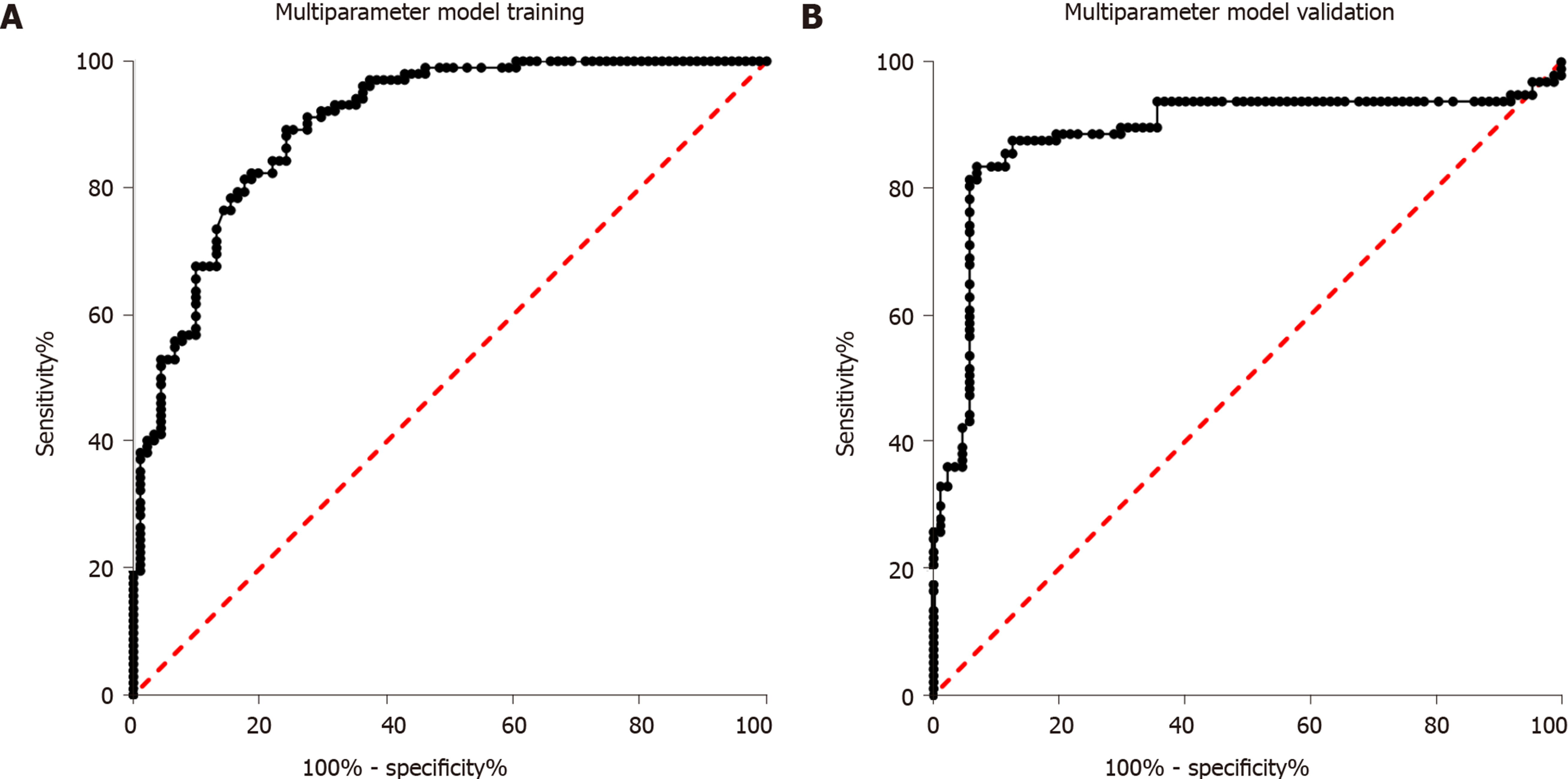Copyright
©The Author(s) 2020.
World J Clin Cases. May 26, 2020; 8(10): 1923-1931
Published online May 26, 2020. doi: 10.12998/wjcc.v8.i10.1923
Published online May 26, 2020. doi: 10.12998/wjcc.v8.i10.1923
Figure 1 Comparison of miR-148b, miR-223, miR-130a, and miR-19a in the three groups.
A: miR-148b; B: miR-223; C: miR-130a; D: miR-19a. HC: Healthy controls; IGR: Impaired glucose regulation; T2DM: Type 2 diabetes.
Figure 2 Receiver operator characteristic curve analysis of miR-148b, miR-223, miR-130a, and miR-19a for discriminating the impaired glucose regulation and type 2 diabetes groups.
A: miR-148b; B: miR-223; C: miR-130a; D: miR-19a.
Figure 3 Receiver operator characteristic curve analysis of the multiparameter diagnostic model consisting of miR-148b, miR-223, miR-130a, and miR-19a for discriminating the impaired glucose regulation and type 2 diabetes groups.
A: Receiver operator characteristic curve of multiparameter diagnostic model training; B: Receiver operator characteristic curve of multiparameter diagnostic model validation.
- Citation: Yan LN, Zhang X, Xu F, Fan YY, Ge B, Guo H, Li ZL. Four-microRNA signature for detection of type 2 diabetes. World J Clin Cases 2020; 8(10): 1923-1931
- URL: https://www.wjgnet.com/2307-8960/full/v8/i10/1923.htm
- DOI: https://dx.doi.org/10.12998/wjcc.v8.i10.1923











